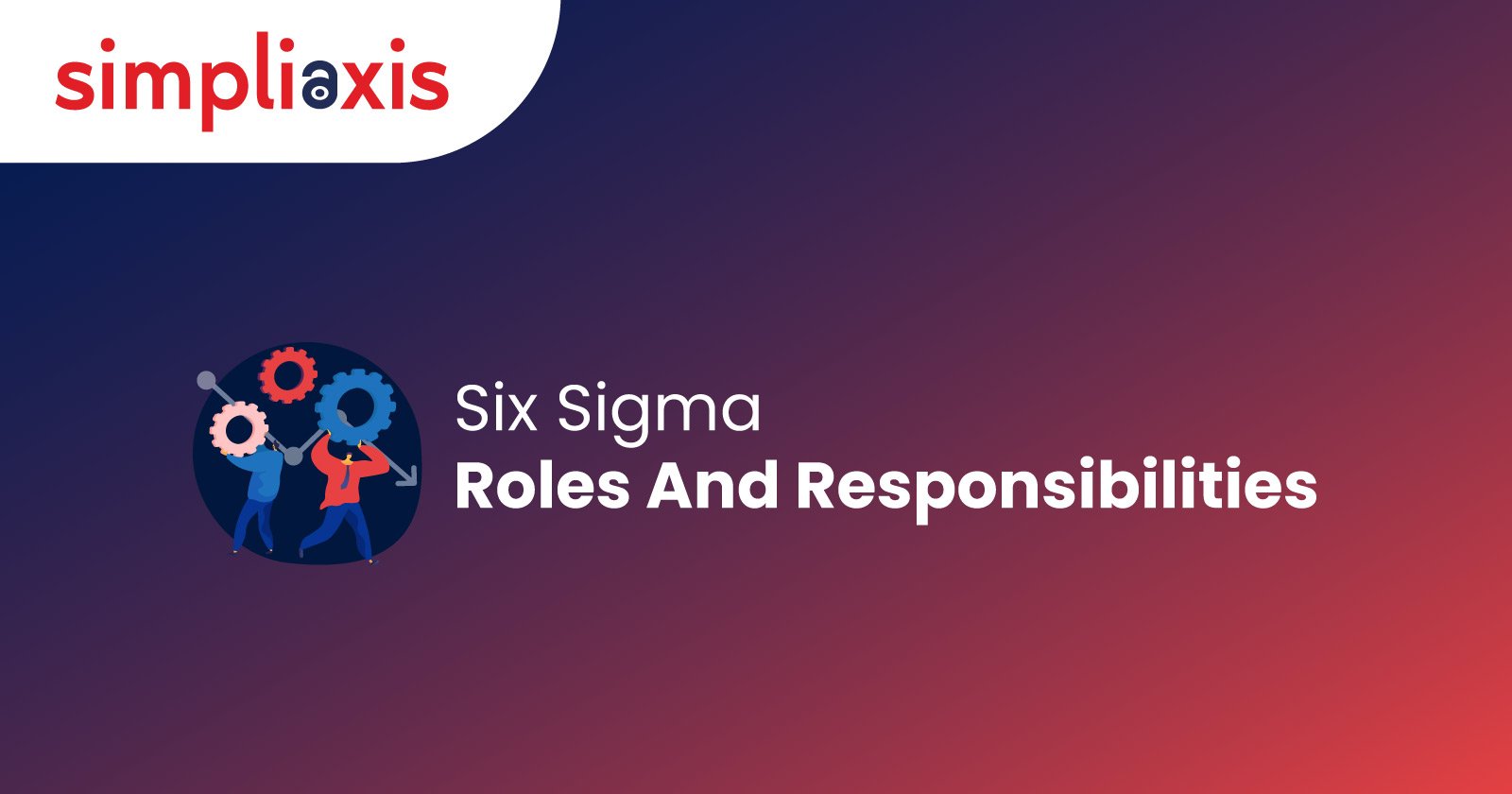When it comes to improving different aspects of business management, it will not be an overstatement to say that Six Sigma is being followed as a disciplined and detailed technique. In addition, this approach helps promote cost efficiency, save time, and improve project managers' leadership skills. This technique mainly aims to reduce deficiencies and errors. When they follow this technique, organizations can achieve better employee morale, higher-quality services, and greater profits by reducing variations and improving performance.
Roles and Responsibilities:
With basic knowledge about Six Sigma, you will be interested in learning about its roles and responsibilities. When discussing the Six Sigma roles and responsibilities, you can classify the roles under two main categories. They are initiative leadership and project leadership. In addition to these two categories, the overall Six Sigma methodology encompasses the following roles:
- Six Sigma Yellow Belt
- Six Sigma Green Belt
- Six Sigma Black Belt
- Six Sigma Master Black Belt
- Six Sigma Champion
- Six Sigma Deployment Leader
In addition to these Six Sigma roles and responsibilities, other popular roles include sponsor, process owner, and team member.
Before getting into detailed information about the six roles above, let us first understand what a team member and a process owner in Six Sigma are responsible for:
A team member will have a general idea of Six Sigma and not essentially a certified professional. But, he/she will be a part of the team because he/she will have expertise and experience relevant to the project.
A process owner is a professional responsible for the business process. This process is the focus of the Six Sigma project.
Key Roles and Responsibilities: Let us gain more information on the other Six Sigma roles and responsibilities here:
Read more: Everything You Need To Know About DMAIC
1. Six Sigma Yellow Belt:
The Six Sigma Yellow Belt, shortly called the SSYB certification, offers the course takers an overall insight into Six Sigma's techniques and Six Sigma metrics. Course takers will even gain knowledge of fundamental improvement methodologies. A Six Sigma Yellow Belt holder must know how to bring together the Six Sigma methodologies for improving the transactional system and production to meet customers' basic objectives and expectations. Typically, a Six Sigma Yellow Belt will have a fundamental knowledge of Six Sigma but does not forerun projects themselves. Often, they are responsible for the process map development for supporting Six Sigma projects.
Roles and Responsibilities of Six Sigma Yellow Belt holders:
A person with a Yellow Belt Certification will participate as a subject matter expert or core team member on a project. He/she will even be responsible for running smaller process improvement projects with the help of PDCA or the Plan, Do, Check and Act technique. This technique helps Six Sigma Yellow Belt holders to discover procedures that could bring improvement. These smaller projects taken care of by Six Sigma Yellow Belt holders are carried forward to Green or Black belt holders. They use the DMAIC technique to improve savings on the cost with the help of statistical process control. From the Six Sigma Yellow Belt training, trainees will gain an introduction to process management. They will also learn about the fundamental tools of Six Sigma that give employees a stronger knowledge of processes. In turn, each course taker will help achieve overall business objectives. This course is seen as the most fundamental introduction to the Six Sigma theories. Individuals undergoing this training are regarded as support staff in an organization that follows Six Sigma practices. They get an overview of the methodology in such a way that they are on board with the intentions and goals of the organization. They gain sufficient knowledge to assist Black and Green belt holders in projects.
2. Six Sigma Green Belt:
When talking about Six Sigma roles and responsibilities, the role of Six Sigma Green Belt holders is to support the Six Sigma Black Belt holders. In other words, they work under the supervision of Black Belt holders and are responsible for evaluating and rectifying quality issues. They engage themselves in quality improvement projects. A Green Belt holder should have at least three years of experience handling Six Sigma processes and tools. They should be able to explain their expertise and knowledge of these processes and tools.
Roles and Responsibilities of Six Sigma Green Belt Holders:
Six Sigma Green Belt holders will be practicing Project Management part-time. They will spend 25 to 50% of their time on Six Sigma projects. They spend the rest of their working hours on their basic functional domains.
It would not be an overstatement to say that the Green Belt is the soul of the Six Sigma team. Green belt holders in a Six Sigma organization will work by contributing to analysis and data collection efforts. In general, Green Belt holders are invited to participate in Six Sigma projects that aid with the improvement of processes that teams work on day-to-day practices.
A Green Belt holder is a potential team leader who will have the opportunity to improve his/her leadership skills by enabling brainstorming sessions. He/she is also allowed to take the lead on certain portions of the project. This person will lead the project team in process improvement. He/she will be responsible for delivering the project's results and for enabling the team through the use of the DMAIC Process.
A successful Green Belt holder in a Six Sigma organization will be a positive thinker. He/she will be risk-taking and good at communicating. Team members will respect him/her. In addition to other capabilities, he/she will have leadership skills.
Learn more about:Roles and Responsibilities of the Six Sigma Green Belt
3. Six Sigma Black Belt:
Six Sigma Black Belt holders are 100% allocated and professionally trained in DMAIC. They also have complete knowledge of other Six Sigma methodologies that help with solving issues. Professionals with this certification will have process analysis, statistical analysis, and Project Management skills. They would have gained knowledge of soft and science skills required to instigate change. They often train Green Belt holders and other Black Belt candidates. They also take lead roles in Six Sigma projects.
Roles and Responsibilities of Six Sigma Black Belts:
Six Sigma Black belts may also serve as internal consultants. In this role, they can help multiple teams in an organization simultaneously. Their responsibilities sometimes encompass training other employees in processes, techniques, and tools.
4. Six Sigma Master Black Belt:
Shortly called MBB, professionals in this rule offer day-to-day leadership for the entire organization's Six Sigma process. These professionals act as connectors between executive leadership and Six Sigma projects in an organization. They do this by keeping leadership engaged in efforts related to improving quality. Professionals in this role are enthusiastic and constant advocates for ensuring quality improvement in Six Sigma.
Roles and responsibilities of Six Sigma Master Black Belts:
Master Black Belts have the right knowledge and education to quantify the impact of a project. Also, they ensure the project's success and create project teams besides identifying Six Sigma projects. Also, they have an eye for identifying new talents. They can select and even certify quality candidates to turn out to be black belts.
Master Black Belts are experts in the methodology, practices, and resources of Six Sigma. Their key goal is to train and coach Black belts. They use their advanced skills in project deployment resource management, leadership, and problem-solving. They work in association with Six Sigma leaders to ensure that the company's initiatives stay on track. They can also train and certify others in Six Sigma Techniques.
5. Six Sigma Champion:
A Six Sigma Champion is otherwise called the sponsor. The sponsor is the organization's senior executive, which funds the entire Six Sigma initiative. They are responsible for managing the value stream, function, and business that are identified as highly important for any Six Sigma team. They play a crucial role as they are the owners of the business processes. So, they always wish to ensure the process improvements are sustained and captured.
Roles and Responsibilities of Six Sigma Champions:
They also manage Six Sigma Green Belts and should understand the challenges Green Belts face, such as removing hindrances. They even work with Master black belts and black belts to ensure their business area has developed. They are also responsible for developing and implementing the long-term vision of the Six Sigma operating atmosphere across the whole operative base. They are also responsible for making sure that the project is defined clearly. Also, they are responsible for ensuring that the project scope stays strictly within the boundaries set at the beginning.
6. Six Sigma Deployment Leader:
One of the key Six Sigma roles and responsibilities is the role of a Six Sigma deployment leader. There can be more than a single leader. These leaders are responsible for hiring a team of master black belts and black belts, among other things. They work with the Master black belt to identify the organizational mission and vision. They are also responsible for providing a goal for the organization to drive Six Sigma at all levels.
Roles and Responsibilities:
A Six Sigma Deployment leader will help the organization develop the Six Sigma culture and nurture the culture to ensure ongoing process improvement. Driving Six Sigma in the organization permits the deployment leaders to operate the company to its full potential. In turn, they will gain extra leverage and a larger budget to take more initiatives.
Also, Check:Six Sigma Implementation Challenges
Conclusion:
These key Six Sigma roles and responsibilities can ensure the right move to the Six Sigma project. From project planning to completion, these professionals will ensure smooth operation and overall project success.
Adopting Six Sigma methodologies is paramount for organizations that enhance business management practices. By leveraging Six Sigma principles, businesses can achieve cost efficiency, save time, and bolster leadership skills among project managers. The primary objective of Six Sigma is to minimize deficiencies and errors, leading to improved employee morale, higher-quality services, and increased profits through reduced variations and enhanced performance. For individuals keen on honing their Six Sigma skills and contributing to organizational success, Simpliaxis offers comprehensive Six Sigma certification courses. By enrolling in Simpliaxis courses, participants can gain valuable insights into Six Sigma methodologies and tools, empowering them to drive process improvement initiatives effectively.














 +1-361-998-9988
+1-361-998-9988


